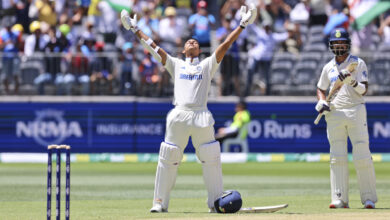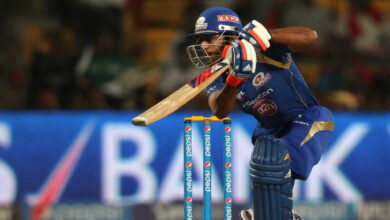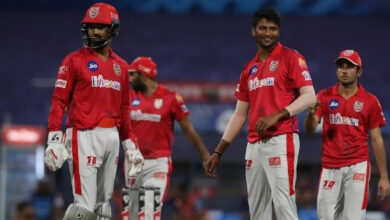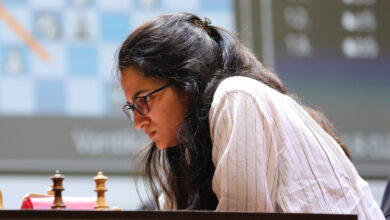Virat Kohli, the Wild West Delhi boy | Cricket-world-cup News

As the World Cup caravan is set to roll across the length and breath of India, a pertinent question arises: how does a place and its social milieu shape a cricketer and influence their game? Could Virat Kohli have been the same man and player were he born in Guwahati East and not in West Delhi? Or what would have happened to Kuldeep Yadav had he been from Colaba in Mumbai? We find out in this seven-part series.Couple of months ago at Reddit India, internet’s Wild West, a post popped up: ‘Why is Delhi so unplanned? Everything is unorderly, especially West Delhi’. Surprisingly, the West Delhi responders didn’t see it as rhetoric and waded into the mess: from traffic crawls, dust, open drains, claustrophobic streets, illegal construction, corrupted system, and even partition-refugee camp hory and centuries of invasions – when all hell broke loose.
“(expletives), demographics puchi kisi ne? Unplanned city ki Baat hori hai?’ came a reply, triggering keyboard punches – abuses of class, colour, caste, natives vs outsiders, horical and current angst flowed. The crux of the responses was that the mess can’t be micro analysed as a recent issue of Municipal Corporation but needs to be seen in the larger perspective of how West Delhi’s over-populated colonies had popped up haphazardly as humanitarian solutions to graver issues: partition’s refugees had to be homed. The scattered agricultural lands in the villages around the urban landscape began morphing into ‘nagars’, named after freedom fighters. It wasn’t a planned neighbourhood; it had grown out of desperation.
Very early in the conversation, horian Ravinder Kaur, who has written a book ‘Since 1947: Partition Narratives among Punjabi migrants of Delhi’, calls West Delhi the Wild West. She knows what she is talking about, Ravinder grew up here.
She talks about how the partition refugees were settled in various camps in West Delhi and some like Vikaspuri, where Virat Kohli’s parents moved decades ago, carved out a few years later. The socio-cultural milieu of the region, its demographics has shaped a generation of people in West Delhi to an extent, she feels. “A West Delhiite has certain character traits that are different from the rest of Delhi. I remember feeling so out of place, as a teenager when I stepped out of West Delhi to the rest. It seemed like a different world.”
After due caution about stereotyping and not generalising, she explains the psyche of West Delhi populace. “There certainly is a bit of wildness in West Delhi people that has not been tamed. There is a certain kind of brashness in West Delhi. A bit of our switches are uncontrolled. A few months ago, someone was scolding other people at the IHC for talking too loudly. I burst out laughing. Pretentious whispers. That’s not happening in West Delhi. People like to think about themselves: we are energetic, we can make something out of nothing. Virat Kohli seems to be from that background. People were thrown into this kind of homelessness but some did prosper or survive. All around me in the 80’s to the turn of the century, I would see that spirit, the never-say-die if you will.”
Senior Kohli certainly did try his best. He attempted different businesses, even tried his hand at stocks, but despite the financial jolts, he kept doing this and that. Some of that fighting spirit, even if not the horical baggage, is seen in Virat, his own admission.
The world knows about Virat’s traits as a batsman and fiery character who doesn’t take a back step. Australian cricket world saw their own reflection in him; and so did Pakan, whose legendary former players gush in awe about him, using “but Virat ko dekho” to mock their own players. He can show the middle finger to the Australian crowd, he can mouth invectives with the South Africans, he can taunt James Anderson’s age, he can share a slew of sledges with Pakanis, and still have all of them dreaming to take his wicket as a prized trophy.
“That untamed wildness I talked about earlier can be seen in Kohli at times. It can also be interpreted as a young man who is super ambitious, who won’t take defeat. Even when we began to move around with the sophicated crowd, we retain that. The best among us, can inhabit different worlds with ease,” smiles Kaur, who these days is based in Copenhagen as associate professor of Modern South Asian Studies.
Virat’s friend and long-time room partner Pradeep Sangwan takes that dual-world aspect further. “I met him recently at some function, mujhe laga change hua hoga,” Sangwan wrote in this newspaper last year. “As soon as Anushka [Sharma] crossed over to the other side of the room, bhai chalu ho jaate (with his pranks). The moment his wife returned, he became a nice boy. As soon as his wife went to meet someone, Delhi ka Virat Kohli was back to talking in the same old style.”
Of all the Indian players that the social Horian Ram Guha says he interacted with, he rated Virat as the most articulate and a man with aura. Guha has talked in the past about the power Virat wielded, especially in the episode of the displacement of Anil Kumble from coach.
Surender Khanna, former India cricketer who is currently in a advisory role with Delhi cricket, is an old Delhi hand, who more than most understands where Kohli comes from.“There is an old saying that elders in my family used to often repeat: ‘Jab chal rahi ho, chalana chahiye, aur na chalaya voh murkh. Jab na chal rahi ho, tab chalane ki koshish karta hai, voh maha murkh hai. Kohli is a very intelligent smart man; he knows where, when to push and when to back out. He stepped down from captaincy when he saw which direction the wind was blowing. Look at his achievements in Test cricket. Look at his reach in the outside cricketing world. He is huge. And yet he hasn’t forgotten his roots. He has time and respect for old cricketers or his childhood coach; he never forgot the coach’s contribution, did he?”
Kohli isn’t someone who is ashamed of his roots. Not everyone from West Delhi is like that, avers the horian Kaur. “There is a certain sense of inferiority complex in some who have moved away from West Delhi and absolutely stopped mentioning that they spent 20 years of their life there. It’s erased. Class’s side-effects, that complex.”Most Read
1
Navya Naveli Nanda makes her debut at Paris Fashion Week, Aishwarya Rai walks the same ramp. Watch
2
After Tejasvi Surya asks Karnataka govt to reconsider carpooling ‘ban’, transport miner Reddy says apps need permission
See More
The West Delhiites, who don’t share that complex, are pretty proud of a culinary dish that they swear emerged from their old bazaars: the Soya Chaap, the mock vegan meat made with soya beans, and stuck in thin sticks as if they were real meat. Befittingly, their most famous son Kohli has turned away from meat products and presumably is still a lover of these Soya Chaaps. These days, West Delhi markets also throw up a slew of yum Afghan momos, another side-effect of their inherent cosmopolitanism.
Kaur has no qualms in saying that among the successful in West Delhi is a survivor’s fighting spirit that imagines a way out of cul-de-sacs in life. “That we can make something out of nothing is a kind of strange belief.” Like Kohli displayed in the last T20 world cup when he and India found themselves in a blind alley against Pakan. It came down to the penultimate over – to the last two balls; if sixes weren’t smacked the final-over target would probably have been out of bounds. But it was Haris Rauf bowling; somehow Kohli conjured two out-of-world shots to deflate Pakan. Much of India’s hopes in the World Cup has been laid on the flashy shoulders of youngsters, but it’s difficult to see light without Kohli’s passionate guiding hand in the middle order. Sachin Tendulkar gave that calm in 2011. Mohinder Amarnath in 1983. That dream-materialising baton is now in the hands of ambitious Kohli.
Professor Kaur zooms into a certain aspect of Kohli’s charm. “What was the social aspiration of the west Delhi youth in those days? To have a large house, two cars, servants, drivers. Virat Kohli just doesn’t attain this kind of thing but he goes all the way up – and he marries a film star! For a story of a west Delhi kid who has made it, he is there where one can only dream of. Part of his charm lies there as well, I suspect, for many of us.” From a West Delhi boy who dreamt big, Virat became the dream itself.







